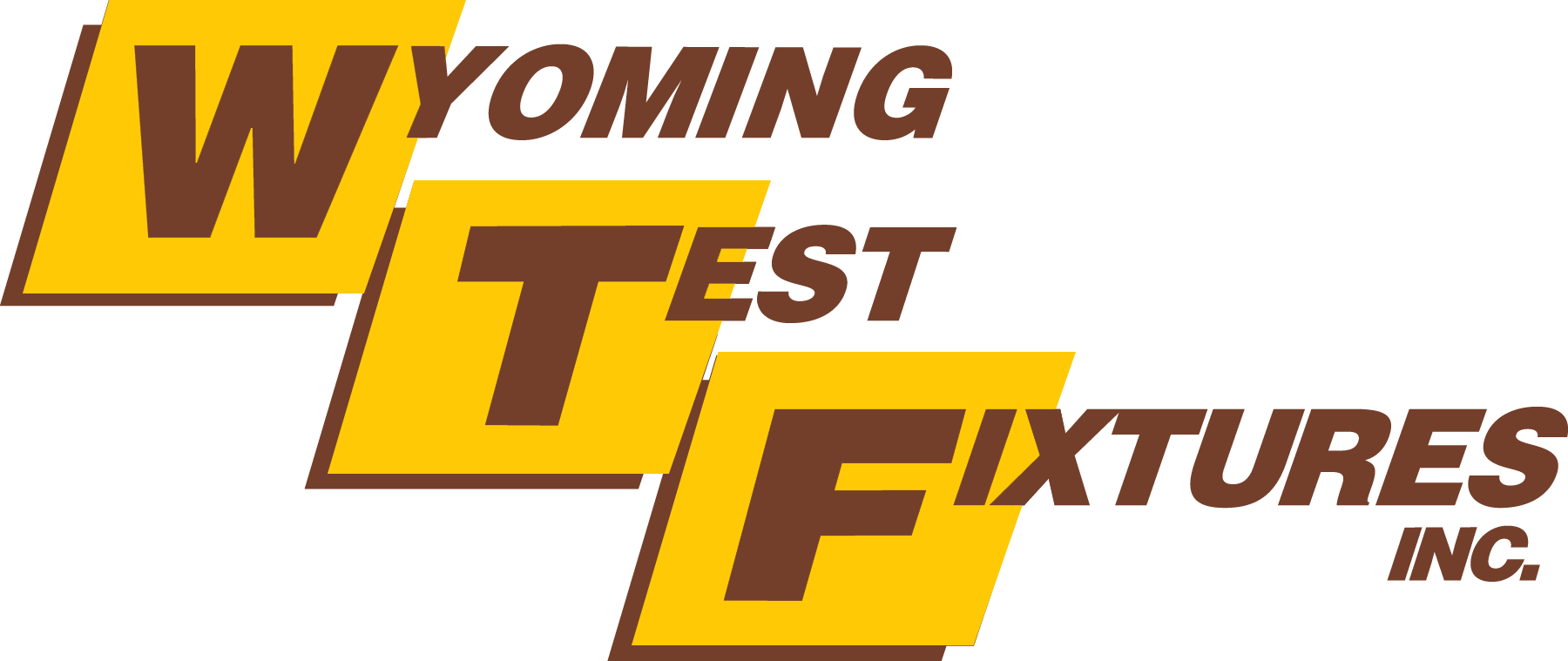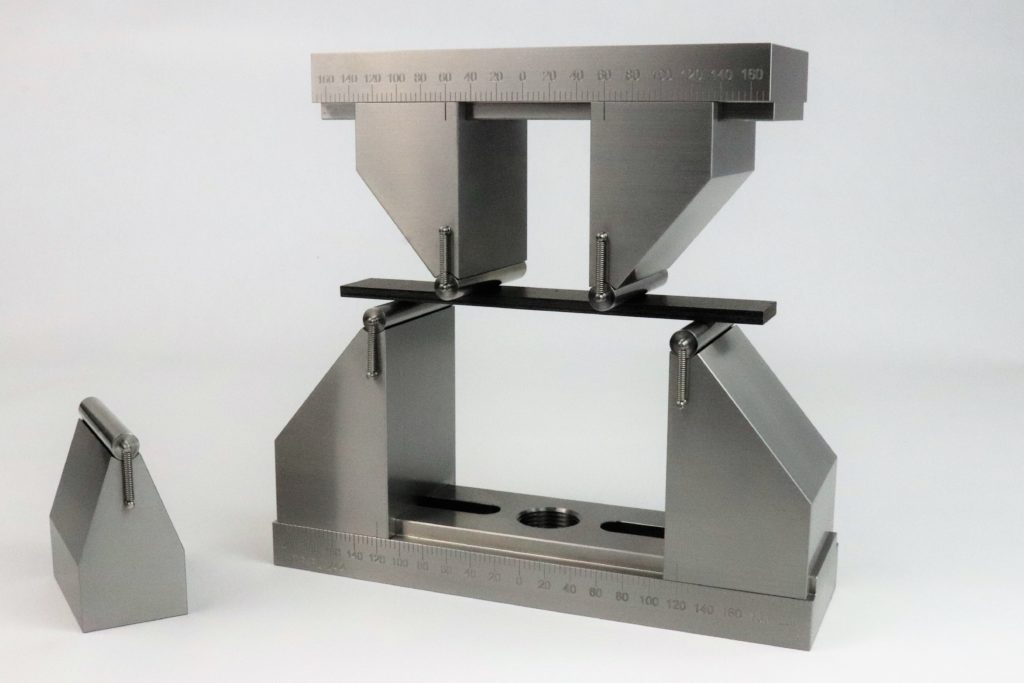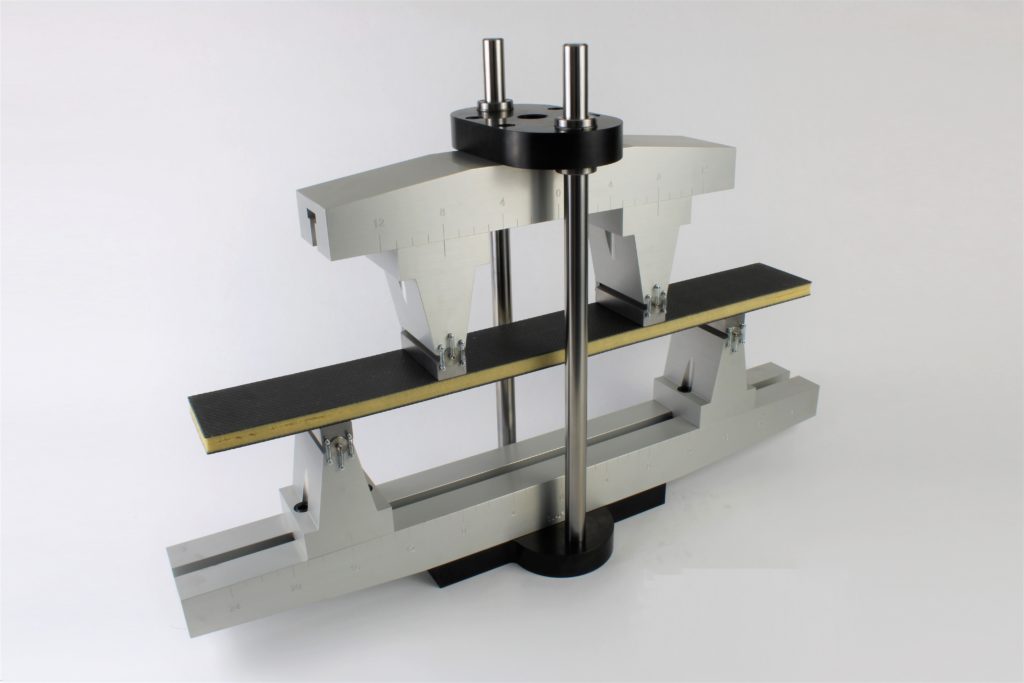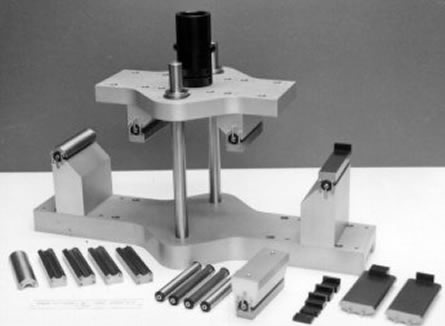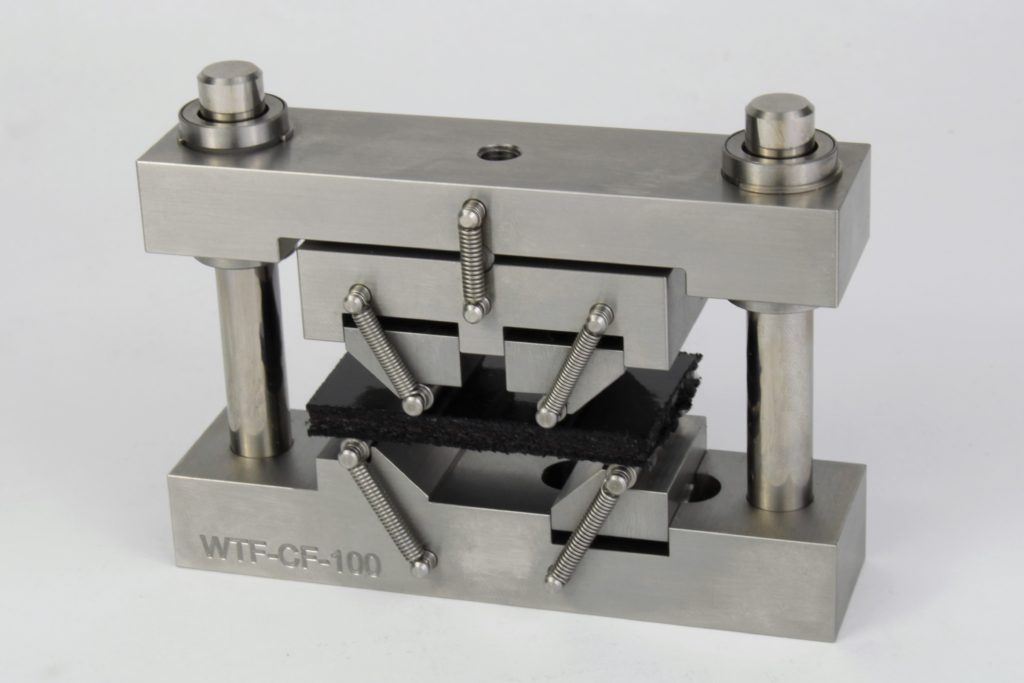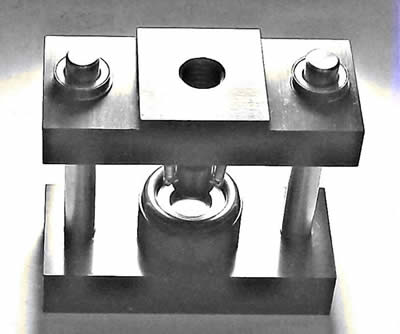Flexure Test Fixtures
Although flexure testing does not produce true material properties as do tension, compression and shear testing, flexural tests are commonly performed to evaluate and compare a material's performance under a loading condition that is often experienced in application. A variety of standardized flexure test methods are in common use for a variety of materials. The most common types of flexure test fixtures in use for a variety of materials are listed.
D-1:Three- and Four-Point Flexure Test Fixture
ASTM D790, 6272, 7264
The Three- and Four- Point Flexure Test Fixture is designed to meet the numerous flexural test method standards currently in use. To accommodate various types of materials, specimen thicknesses, and span length-to-thickness ratios, the support span length of the fixture is infinitely adjustable over the full range of span lengths up to 8". Additionally, interchangeable hardened steel cylinders can be provided to account for any required support and loading radii.
D-2:Long Beam Flexure Test Fixture
ASTM D7249
Similar to the standard flexure fixture, the Long Beam Flexture Test Fixture is capable of both three- and four-point loading but with a maximum span of 24". Either pivoting flats or hardened cylinders can be used as load and support points. Another option is the addition of alignment rods and linear bearings to the standard fixture which maintain alignment of fixture halves independent of the testing machine alignment.
This is a specialized version of the standard Long Beam Flexure Fixture and includes alignment rods and linear bearings. Rather than being fully adjustable, it is designed for specific loading and support spans. Up to three different loading and support spans can be specified by the customer, with the maximum support span being 24". This is sometimes desired in testing environments such as production quality control, to insure that the proper spans are consistently being used and cannot be altered. The maximum specimen width can also be specified, being typically between 2" and 6".
Ceramic Flexural Testing
D-4:Ceramic Flexural Strength Test Fixture
ASTM C1161
ASTM Standard C1161 governs the Flexural Strength Test for Ceramics. Three configurations (A-C) define different specimen geometries. Configuration B is the most common, but all three allow a semi- or a fully-articulated three- or four-point loading test fixture. The purpose of articulation is to accommodate any twist or lack of flatness of the test specimen since specimens are often tested in the as-fired state.
D-5:Ceramic Equibiaxial Flexural Strength Test Fixture
ASTM C1499 & ASTM F394
An equibiaxial test configuration eliminates specimen warpage that can become a factor for both ring-on-ring and straight beam flexure testing. Another advantage is that the maximum (biaxial) tensile stress occurs at the center of the specimen. Thus, the surface finish of the edge of the specimen is not critical. This is not the case when flexural testing a straight beam.
